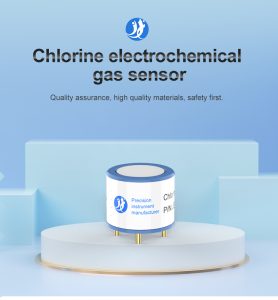The Earth's atmosphere is a delicate balance that sustains life on our planet. However, increasing industrialization, urbanization, and human activities have resulted in the release of various pollutants into the air, leading to environmental degradation and negative impacts on human health. To protect our atmosphere and mitigate the dangers of air pollution, advanced technologies are being developed. Gas sensors have emerged as powerful tools in revolutionizing environmental monitoring, allowing us to closely monitor and understand the composition of our air. This article explores the significance of gas sensors in environmental monitoring and highlights the advancements that have made them the guardians of our atmosphere.

Understanding Gas Sensors:
Gas sensors are devices designed to detect and measure the presence of specific gases in the atmosphere or other environments. They operate based on various principles, including chemiresistive, electrochemical, and optical sensing. The sensing element of a gas sensor interacts with the target gas, causing a physical or chemical change that can be measured and quantified. This information provides valuable insights into air quality and helps us identify and address pollution sources.
Advancements in Gas Sensor Technology:
Enhanced Selectivity and Sensitivity:
Advances in gas sensor technology have significantly improved their selectivity and sensitivity. Traditional sensors often faced challenges of cross-sensitivity, where interference from other gases affected accuracy. However, modern gas sensors utilize innovative materials and designs that enable highly selective detection of specific gases. This enhanced selectivity allows for more accurate identification and quantification of pollutants, even in complex environments with multiple gas components.
Miniaturization and Portability:
Gas sensors have undergone a transformative shift towards miniaturization and portability. Traditional monitoring systems relied on large, stationary equipment, limiting their deployment options. However, miniaturized gas sensors now offer the advantage of being integrated into wearable devices, mobile phones, and unmanned aerial vehicles (UAVs), enabling on-the-go monitoring. This portability allows for widespread deployment and real-time data collection in a variety of locations.
Real-Time Monitoring and Data Analysis:
Gas sensors, coupled with advanced data analysis techniques, provide real-time monitoring capabilities. The collected data can be processed and analyzed using artificial intelligence (AI) algorithms, enabling the identification of patterns and trends in air quality. Real-time monitoring allows for immediate action to be taken in response to rapidly changing pollution levels, ensuring timely interventions and mitigation measures.
Internet of Things (IoT) Integration:
Gas sensors are increasingly being integrated into IoT platforms, enabling seamless communication and data sharing between devices. IoT integration allows for the creation of comprehensive environmental monitoring networks, where data from multiple sensors can be combined and analyzed collectively. This interconnectedness enhances our understanding of air quality on a broader scale and facilitates informed decision-making for pollution control and policy formulation.

Applications in Environmental Monitoring:
Urban Air Quality Monitoring:
Urban areas are often hotspots for air pollution due to high population densities and various pollutant sources. Gas sensors deployed in cities can provide real-time measurements of pollutants such as nitrogen dioxide (NO2), particulate matter (PM), carbon monoxide (CO), and ozone (O3). This information helps city officials and policymakers develop targeted strategies to reduce pollution, improve public health, and enhance overall urban livability.
Industrial Emission Control:
Gas sensors play a crucial role in monitoring industrial emissions and ensuring compliance with environmental regulations. By installing gas sensors near industrial facilities, operators can detect and measure the release of harmful gases and particulate matter, such as sulfur dioxide (SO2), volatile organic compounds (VOCs), and heavy metals. Continuous monitoring enables prompt actions to mitigate emissions, minimize environmental impact, and protect the health of surrounding communities.
Indoor air quality is equally important, as people spend a significant portion of their time indoors. Gas sensors can be used to monitor indoor pollutants originating from building materials, household products, and human activities. Carbon dioxide (CO2), volatile organic compounds (VOCs), and formaldehyde are examples of gases that can be detected. Continuous monitoring allows for the identification of potential sources of pollution, ensuring a healthy indoor environment.
 : +86 155 8830 2704
: +86 155 8830 2704 : jxdziot@gmail.com
: jxdziot@gmail.com
